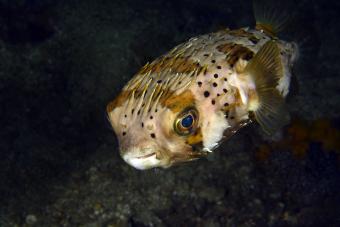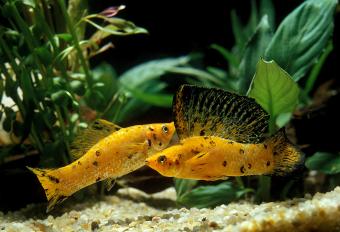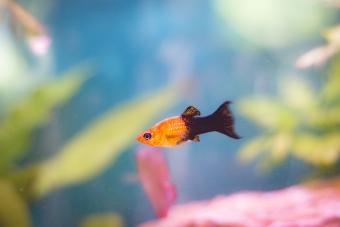
Pufferfish are undeniably adorable, and fortunately, you can keep one of your very own. Before you go all in on a puffer, you'll need to decide whether you want a freshwater or marine species, because they do have different care requirements. Pick a pet pufferfish you can accommodate, and learn how to keep them healthy and happy. All puffers have big personalities, and you can't go wrong with any of them.
Pufferfish Are Amazing Pets
If you've always dreamed of having a pufferfish in your aquarium, it's time to make it a reality. But do these little critters make good pets? You bet. Pufferfish make incredible pet fish for the right household. These fish are intelligent, entertaining, and downright cute. Just know some puffer species can become aggressive toward their tankmates, so be careful about who you house them with.
A lot of owners love that freshwater pufferfish keep their snail population under control. But because they feed on these small creatures, you should not house them with any invertebrates you don't want to be turned into a snack. Marine puffers also snack on inverts, so keep this in mind if you already have corals or invertebrates in your setup.
Pufferfish Species to Consider
Whether you have a freshwater or marine tank, there's a pufferfish species that should work for you. Some of the most popular to keep as pets include the following.
Freshwater Puffers
- Congo Puffer (Tetraodon miurus)

- Dwarf Puffer (Carinotetraodon travancoricus)

- Greenbottle Puffer (Auriglobus nefastus)
- Imitator Puffer (Carinotetraodon imitator)
- Red-eyed Puffer (Carinotetraodon lorteti)
- Mbu Puffer (Tetraodon mbu)

Marine Puffers
- Black Saddled Puffer (Canthigaster valentini)

- Blackspotted Puffer (Arothron nigropunctatus)

- Porcupine Puffer (Diodon holocanthus)

- Stars and Stripes Puffer (Arothron hispidus)

Aquarium Size
Pet pufferfish are unique in that they need an aquarium that will accommodate their usual size as well as their "puffed up" size. The exact size of your tank will depend on the species. Here's a chart that shows you approximately how big your pufferfish aquarium should be:
| Pufferfish type | Minimum aquarium size |
|---|---|
| Dwarf Puffer | 15+ gallons |
| Imitator Puffer | 15+ gallons |
| Red-eyed Puffer | 20+ gallons |
| Black Saddled Puffer | 30+ gallons |
| Greenbottle Puffer | 30+ gallons |
| Blackspotted Puffer | 100+ gallons |
| Porcupine Puffer | 150+ gallons |
| Stars and Stripes Puffer | 200+ gallons |
| Mbu Puffer | 500+ gallons |
Pet Puffer Diet

Arguably the most challenging thing about having a pufferfish as a pet is their diet. Puffers eat crustaceans, mollusks, and other invertebrates with crunchy shells. A proper diet is crucial for these fish, not just because it will keep them healthy, but because they need to wear down their teeth on the hard food. Depending on your puffer's size, you can feed them:
- Mussels
- Snails
- Shrimp
- Crab legs
- Clams
- Oysters
- Crayfish
- Krill
- Bloodworms
- Worms
- Carnivorous fish pellets
Pufferfish Teeth Care
Dental care for a pet fish? Yep, you heard us right. Puffers have beak-like teeth that grow continuously. If your puffer isn't able to wear their teeth down fast enough, they can become overgrown. Feeding your pufferfish a balanced diet with plenty of crunchy foods can help prevent this. Even so, certain puffer species, like the greenbottle pufferfish, will often develop overgrown teeth even if you feed them the perfect diet.
Some hobbyists will trim their puffer's teeth at home every four to six months. If you have experience with sedating and handling fish, you can attempt this yourself, too. But contacting your aquatic veterinarian and having them perform the procedure is a safer option.
Yes, pufferfish have teeth. They use their beak-like chompers to eat hard foods like snails, clams, and other shellfish.
Keep Your Puffer Calm and Happy
Will my pet pufferfish puff up? Yes, they might! Puffers blow their bodies up as a defense mechanism when they feel threatened, so if your puffer is provoked, they could certainly inflate. It's cruel to prod your puffer to get this reaction, though, because puffing up can be dangerous for your puffer. Keep your puffer in a calm, tranquil environment to keep them safe, and avoid placing them with small invertebrates unless you want your puffer to munch on them.







